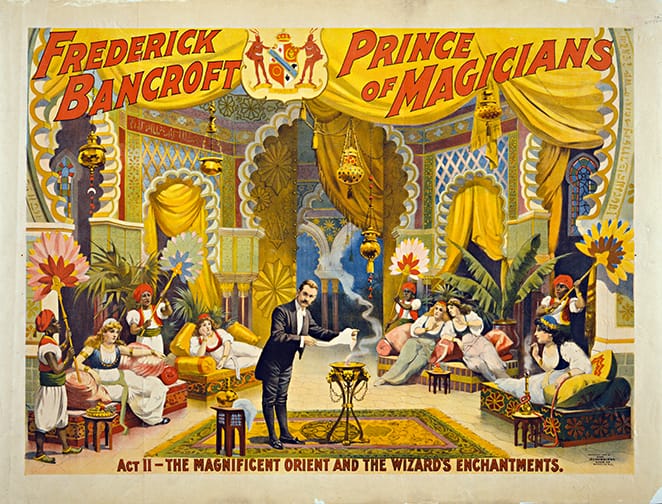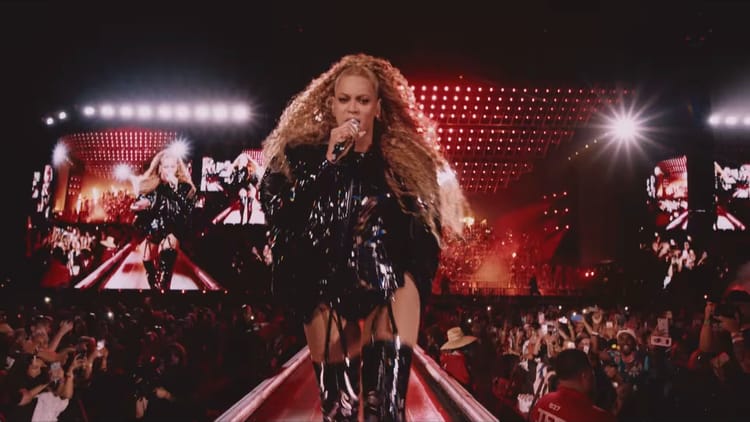Simple for the Cameras

Good morning (for me), or afternoon/evening/night (I don’t know your life), and a very happy New PTA Stuff Day to all who celebrate!
I’ve been doing what I can only describe as writing wind sprints recently as I move towards finishing the delivery draft of my Bob Dylan book. I’ve let various potential newsletter topics come and go in the past few weeks—there were the finales for The Curse, For All Mankind, and Fargo, which I wrote about 66.66% of a post about; there were some new Bluey episodes dumped on Disney+, which I wrote about .01% of a post about. But nothing has felt urgent enough to make me DEAN (Drop Everything And Newsletter). Until this morning, when I noticed that overnight, Paul Thomas Anderson dropped another music video for the Smile.
Back in November, Anderson directed the video for “Wall of Eyes,” the first single off the new Thom Yorke/Jonny Greenwood project. It was a lush and visually inventive video that I had a lot of fun dissecting. Well, now Anderson has delivered a video for the new Smile single “Friend of a Friend,” and it initially seems far lower concept than “Wall of Eyes.” Here, I can describe it in a sentence: the Smile performs “Friend of a Friend” for a gym full of little kids. That’s the video. Simple. Too simple for a newsletter?
[clears throat, taps papers on desk, gets settled]
In 2016, Paul Thomas Anderson directed his first HAIM video, the three-song suite “Valentine,” and it begins with Anderson’s voice: “Simple for the cameras, complicated for the girls.” That tends to be his ethos in his videos: keep it simple, keep out of the way, let the artists do their work. It’s the approach he took in another couple of videos for Greenwood and Yorke, both of which I really like: the “Jonny Thom & a CR78” videos. In both videos, the musicians just sit there playing the song, but Anderson’s simplicity serves the lyrical and musical density—he allows us to linger with these complicated performances. There’s some cutting in the videos, the first being “Present Tense”:
But the other video, “The Numbers”, opens with a slow, two-minute dolly push, and I really like how Anderson leaves the dolly track visible in the bottom of the frame. He doesn’t mind letting you see how this thing is being created. No illusions. Simple for us, so we can watch them be complicated.
There’s also Junun, Anderson’s documentary for the Greenwood/Shye Ben Tzur/Rajasthan Express album of the same name. That film is shot almost entirely at Mehrangarh Fort in Rajasthan, India, and it’s a really fascinating object—the usually formally meticulous Anderson is forced to keep it as simple as possible, using consumer-grade camcorders to find his images on the fly, reframe when the notion strikes him, and get distracted by birds as often as he wants. It’s a work of striking naturalism from a guy whose movies are often so controlled they’ve been called Kubrickian.
And now we have “Friend of a Friend,” which is a lot slicker than either the “Jonny Thom & a CR78” videos or Junun, but still resolutely simple. We open with the kids filing in, dressed in their 21st century finest (man, I can’t wait for that new contemporary-set PTA feature), and take their seats on the bleachers. In front of them, the band waits. But when Yorke’s bass kicks in, the diegetic sound vanishes abruptly—we’re in the magic realism world of a musical; this is not a filmed performance.
And from there, the video belongs to the kids. We watch them watch, and their reactions seem totally genuine, entirely uncoached. Anderson’s camera is fascinated by their faces–this is simple for the cameras, complicated for the kids, who are processing some pretty ominous music (it’s not clear how often they’re responding to the song itself, but based on the number of times they share the frame with the musicians, the answer is “often enough”). We get the range of responses, from boredom to engagement to rocking out to just listening politely.
But it’s not really a casual thing for Anderson to bring in a bunch of kids. Back before I’d even started writing my book, I used to joke that the main moral of every PTA movie is: “Be nice to your fucking kids.” It’s the explicit message of Magnolia (“Dad, you need to be nicer to me”) but it’s just as evident in Boogie Nights (“You’re not going to be shit because you’re too stupid!”) and There Will Be Blood (“I’ve abandoned my child!”). There’s a shot in Magnolia where Stanley is literally positioned in front of a pair of wings. Children are angels in Anderson’s world, and their innocence is precarious. I’m no Thom Yorke fan, but I generally hear a lot of dread in his music. Dropping a bunch of kids in front of that sort of music has to be disorienting for them—my seven-year-old watched the video this morning and found it extremely puzzling—and the contrast between their guilelessness and the musicianship on display is a little bit eerie.
I generally struggle to analyze Thom Yorke lyrics, and “Friend of a Friend” is no different. I appreciate Genius Lyrics’ attempts at helping me out: “Friend of a friend” is a tautology, since it could refer to yourself. That’s cool. The line about waving from balconies could refer to the pandemic. Sure. I see a lot of alienation in these words—yes, Yorke and his friends are sequestered, separated. “I guess I believe in an altered state whether they leave their windows and their doors open wide. Here the telephone lines are always busy, unable to give a reason or a straight answer.” We’re a long way from “Baby Beluga” here—or Taylor Swift, as the first graders of 2024 are more interested in.
In this simple video, the most striking effect comes when the blue lights start flashing. It couldn’t be simpler, and the fact that it is so striking just testifies to how low-stimulation the rest of the video arguably is. Really, I haven’t said a lot about the video here, just used it as an excuse to ramble about some other PTA matters. But I do think this one is a pretty interesting entry in his music video canon. The more he collaborates with Yorke and Greenwood, the more varied and intriguing the results are getting. I don’t know how much more the Smile music I need personally, but I’ll be looking forward to the next video.




